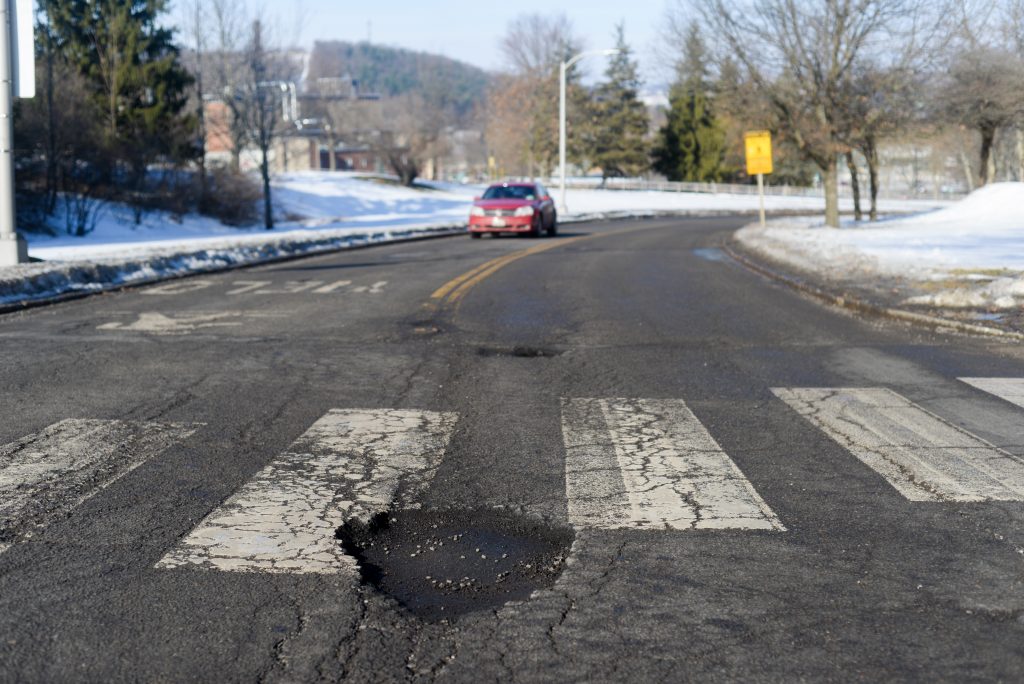Potholes can become a recurrent part of driving on Binghamton University’s roads, and this winter is no exception.
As students returned to campus after winter break, some began noticing rougher pavement. According to Karen Fennie, communications specialist for Physical Facilities, there is a reason that winter roads tend to be more broken.
“Potholes occur when water seeps through cracks in pavement and freezes, causing it to expand and the pavement to break up,” Fennie wrote in an email. “After the water melts and cars apply continuous pressure on the asphalt, potholes form. It’s pretty typical.”
Fennie wrote that the state of the University’s roads is about the same as it has been in past winters. Physical Facilities intends to fully repair the potholes in the spring when temperatures are warmer.
“At this time of year, only temporary patching is possible with a ‘cold patch,’” Fennie wrote. “We will [repair potholes] when conditions allow. The roads have to be relatively dry to do this.”
Benjamin DeAngelis, political engagement coordinator at the Center for Civic Engagement, said he notices the potholes frequently while commuting to and from work.
“My car is very low to the ground, so I’m always trying to go around them,” DeAngelis said.
Others, like Lesia Hrycyna, a senior majoring in Russian, are concerned about the damage the potholes could cause to their vehicles.
“It’s an issue because they are on the main roads,” Hrycyna said. “It’s okay when nobody else is on the other lane and you can drive around, but other times you can’t, so you worry about what damage can happen to your car.”
But some students, faculty and staff haven’t noticed the potholes. Hehuanyu Li, a senior majoring in biology, said she believes the campus roads are in good conditions.
“I hardly notice there being any potholes,” Li said. “The roads seem fine to me.”
Despite the potholes, many drivers on campus have greater concerns than road conditions, such as parking accommodations. Li said markers for where commuters can and cannot park is misleading.
“You can’t park outside the East Gym, but it’s not marked,” Li said. “I feel like they should mark places where you can’t park.”
DeAngelis said the lack of parking across campus presents problems for both faculty and students.
“Sometimes the faculty lot is full, but the student lot has spots and sometimes the student’s lot is full, but the faculty parking has spots,” DeAngelis said. “You’ll get ticketed if you park in the wrong lot even though you have nowhere else to park.”



